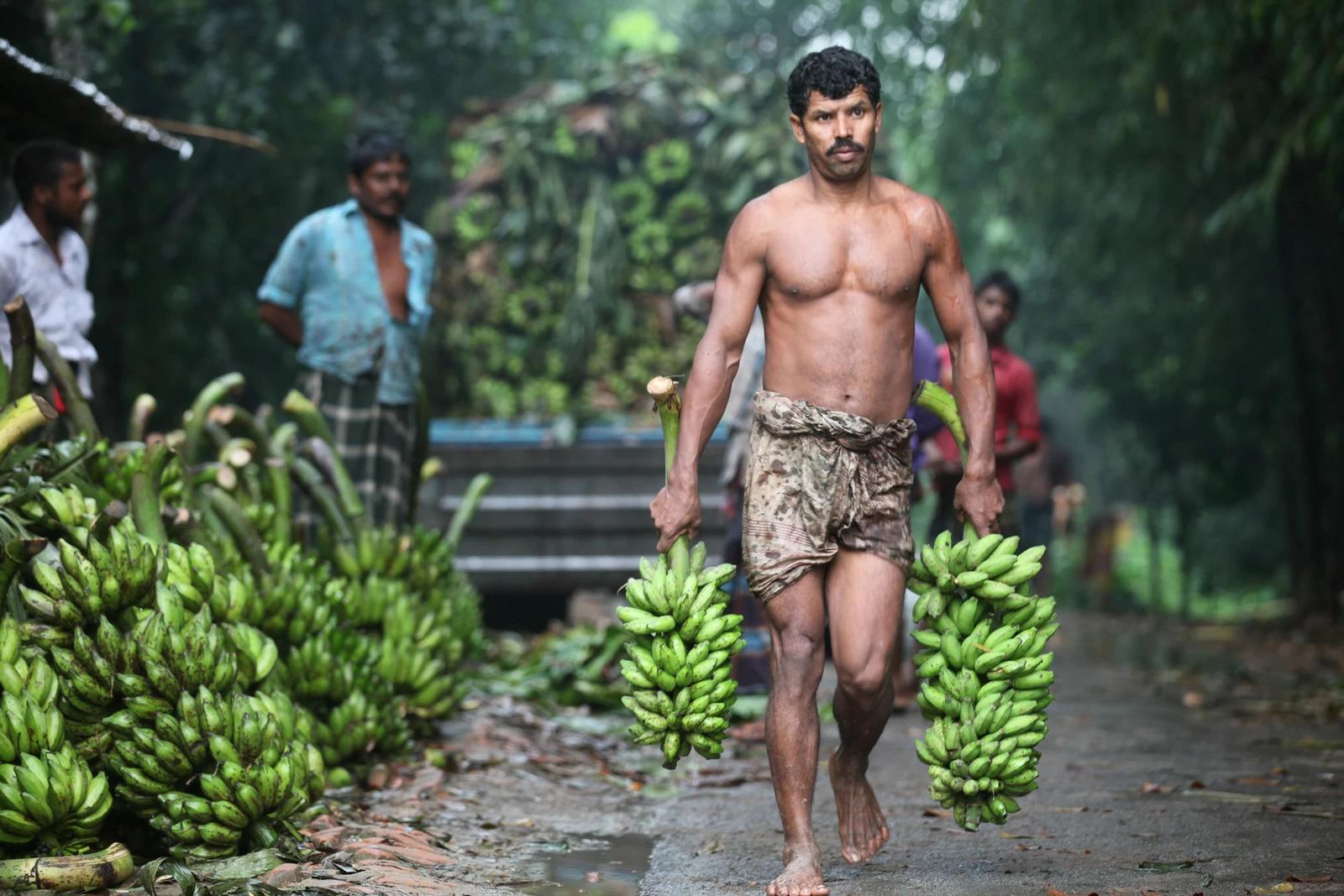15 Reasons Why Every Photographer Needs a Portfolio Website
Leighton Emmons
Sat Mar 21 2020

Investing time, energy, and money into creating your own portfolio website can seem like a big undertaking. While this might’ve been the case years ago, today is a very different reality.
Photographers have access to more portfolio website builders than ever, making it easier than ever before to build a fantastic website to showcase your work.
While we always advocate standing out from the crowd, in this instance, you don’t want to be the only without a portfolio website.
Why?
Here are 15 reasons we think its crucial:
1. Gaining exposure
The most obvious reason is that a website is available for anyone and everyone on the internet to find.
The internet is expansive, and ever growing. With more people having access to the internet, your potential audience is growing every day.
Meaning more views for your work.
With more people viewing your work, you’ll have a higher likelihood of making sales, earning new clients, building your reputation and getting your images published.
Combine this with Search Engine Optimization (SEO, the process of ranking higher in Google), a portfolio website significantly increases the chances of strangers discovering your work.
2. Making sales
An online portfolio website can help you find new buyers and facilitate making sales.
Imagine the limitations of only ever being able to sell your photos through offline formats like gallery showings and photography showcases.
Online however, you have the possibility of selling to clients directly. This could be via clients contacting you directly, or by placing your work with online sales platforms like Getty Images.
If you succeed in being accepted as a contributor to Getty Images, you’ll have suddenly opened a residual income stream from your work. This means you’ll be earning revenue for work you already did. Your personal archive becomes an investment that delivers financial interest.
The bigger your archive, the more potential to earn money down the line.
If you’re interested in publishing your images to Getty Images, read more here.
3. Staying organized
There’s no better way to stay organized than to have all your images stored in one place.
When you prepare your work to be published on a website or be sold online, you’ll have to have your work neatly organized, tagged and categorized so prospective buyers can easily navigate your archive.
Thus, creating a portfolio website just might be the push you need to finally get your photo archive organized.
Lucky for you, LightRocket has powerful archive management tools that help you keep your photo library organized whilst seamlessly integrating it with your portfolio website.
 Bangladeshi Banana vendors collecting Banana for selling local market in Dhaka. Bananas are the developing world’s fourth most important food crop (after rice, wheat and maize) in terms of gross value of production. Photo and story by Mahmud Hasan
Bangladeshi Banana vendors collecting Banana for selling local market in Dhaka. Bananas are the developing world’s fourth most important food crop (after rice, wheat and maize) in terms of gross value of production. Photo and story by Mahmud Hasan
4. Protecting your work
This is a two-pronged point.
The first is that by uploading your work to a website, and thus to an online photo storage system, you are creating security backups in case anything happens to your hard-drives (or whatever offline storage you use). Digital storage in the cloud means you always have a duplicate copy online.
Secondly, portfolio websites allow you to apply watermarks to your images ensuring your work is protected from passing screen grabbers who might otherwise think nothing of copying your images. If your portfolio website is the only place you publish your images, you can be sure no one can steal your images without your permission.
It’s important to be in control of your work, and portfolio websites help you achieve just that.
5. Building a following
A website gives you the opportunity to build a community around interested visitors to your website.
You can have them subscribe to a newsletter, sign up to receive updates about your work, or if you’re on LightRocket, you can have people follow you as a photographer directly.
But building a following begins with connecting with the right people.
Connecting with the right people starts with having a website to properly and convincingly showcase your work.
At LightRocket, our growing community of contributing photographers is a great place to reach out to and meet new photographers in your photography niche!
6. Legitimizing your photography
Up until now photography may just be a hobby for you. A passionate activity for passing time and expressing your creative spirit.
But a portfolio website legitimizes and adds credibility your status as a photographer. It gives you the ability to showcase your best work, highlight meaningful images, and tell the stories you want to tell.
It can elevate your work and represent a polished collection of your photographic accomplishments. Even if you’re not a pro, you’ll suddenly look like one.
 A young boy swimming in extremely polluted river water. The indiscriminate discharge of liquid waste by industries and factories in and around the Dhaka industrial zone has ruined a large part of the Buriganga river, causing immense suffering to residents living on the banks. Photo and story by Probal Rashid.
A young boy swimming in extremely polluted river water. The indiscriminate discharge of liquid waste by industries and factories in and around the Dhaka industrial zone has ruined a large part of the Buriganga river, causing immense suffering to residents living on the banks. Photo and story by Probal Rashid.
7. It doesn’t cost much
Owning your own website costs little to nothing.
There’re only two expenses you’ll need to account for:
- Paying for a host service to host your portfolio website online (At LightRocket, this is as cheap as $49 a year).
- Buying yourself a unique domain (this is optional). This can be as cheap as $9.99 for the year. Check out NameCheap for buying yourself a domain!
In total, this brings your cost of owning a website to roughly $60 a year.
That’s a cup of coffee every month (depending on which cafe you go to, of course)!
8. You won’t need website building knowledge
Have no idea how to code or do website design?
Don’t worry, it’s no longer the early days of the internet when you would have to code your website from scratch.
Designing and publishing your own website is now easier to do than ever before. Many online website builders have simplified the process to the point where you don’t need to type a single line of code.
In fact, creating your own portfolio website takes as little effort as simply uploading your images and organizing them how you like.
Since there’s now little or no technical knowledge required to create a website, there’s no longer a barrier to you creating a slick-looking website of your own.
9. Websites never sleep
Every second of the day people are awake, active, and busy – somewhere. So, while you might be sleeping half the day, your website won’t ever take a break.
Imagine that, your very own online channel for selling images that remains open 24/7.
There’re no other channel for showcasing your work that will work for you as reliably as a portfolio website will.
 Broad Street at night, Philadelphia, Pennsylvania, USA. Photo and story by John Greim.
Broad Street at night, Philadelphia, Pennsylvania, USA. Photo and story by John Greim.
10. Leaving a legacy and digital record
In line with protecting your photos and having digital backups for your most prized images, a portfolio website is a great way to preserve your photos and your work.
With a digitized archive and an online portfolio, your work will remain in existence and be visible to the world for as long as you choose. Keeping meaningful work you’ve completed alive for future generations to appreciate.
We all know art is timeless, and that includes your photos. So keep them somewhere they won’t disappear or be buried away and forgotten about.
11. Chance for innovating and be creative
Just as photography is a creative outlet to express yourself, the creation of a portfolio website is another way for you to express yourself.
How you choose to layout your images and style your website through fonts and colors is all up to you. You’ve got an open creative palette to play with.
Building a portfolio website is your chance to get creative, and bring your own sense of style and design into into a finished website that you can put your name to.
12. An opportunity to learn new skills
While we mentioned earlier that little to no technical skills are required for setting up a portfolio website nowadays, there are distinctions between the designs of good and bad website.
You’ll get to experiment with what looks good and what doesn’t.
What colors match what fonts.
How logo design can be paired with a website’s layout.
All of these new skills are waiting to be mastered by you.
13. A resume and more
A portfolio website is by nature a showcase of your most valued, memorable, and important works. It’s like a brochure, visiting card and gallery for your talent, all in one.
It showcases your skills as a photographer, and thus communicates to prospective clients the work what you’re capable of achieving.
While a conventional resume is great for outlining the projects you’ve worked on, a portfolio website does so much more.
A portfolio website has the ability to showcase your talents beyond what you can do with plain text. It demonstrates the quality of work you can produce, which is generally more valuable to prospective clients than anything you could explain in an email.
 Cleaning robot from LG on display at Incheon International Airport in Seoul, South Korea. The cleaning Robot, is LG’s latest addition to the international robot market. Photo and story by Jonas Grazter.
Cleaning robot from LG on display at Incheon International Airport in Seoul, South Korea. The cleaning Robot, is LG’s latest addition to the international robot market. Photo and story by Jonas Grazter.
14. Keeping up with the next generation
Yesterday it was print, today its websites. Tomorrow, well, who knows.
Portfolio websites are keeping up with newer generations and adapting to the developing world of photography. Creating a portfolio website provides an important opportunity to provide structure and visibility for your work.
Put simply a portfolio website ensures you as a photographer and your photography business don’t get left behind.
15. The future is online
It’s no surprise, with photography increasingly becoming an almost exclusively digital medium, that going online represents opportunities moving forward.
Need to backup and protect your photos? Upload them online.
Need to reach a bigger audience? Forget taking out ads in newspapers, advertise online.
Need to quickly distribute images to clients far away? Just send files online. With a LightRocket account you can simply select files and share them to whoever you like with a private link. How cool, efficient and easy is that?
Written by Leighton Emmons.
Featured photography by Igor Miske
To read more helpful articles on photography, check out our blog page.
Join our growing photographer community at LightRocket and get powerful archive management and website building tools for free!


